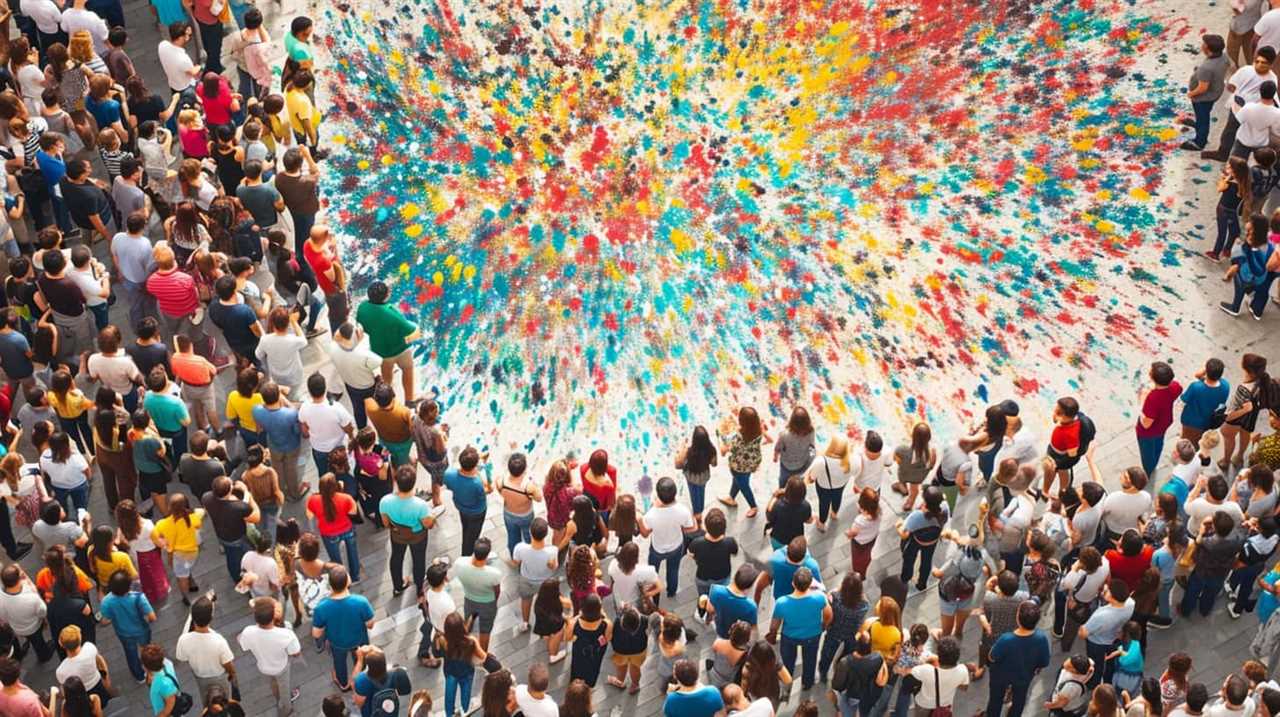Exploring the world of creativity leads us to a lucky find: expert artists are revealing the inner workings of their creative processes. That’s correct! These skilled virtuosos, who have reached unmatched mastery in their fields, are generously imparting their priceless insights to us.
Through their unique approaches, intense inspirations, captivating color choices, and meticulous techniques, we are given a glimpse into the minds of these extraordinary individuals. Their surrealistic visions, intimate self-portraits, action painting methods, sculpting mastery, and experimentation with perspective further enrich our understanding of their creative genius.
Their wisdom and expertise are like precious gems, waiting to be unearthed by those who yearn to reach new heights in their artistic endeavors. So, join us on this enlightening journey as we unlock the secrets and unleash our own creative potential.
Key Takeaways
- Master artists like Picasso, Van Gogh, Monet, and surrealists have revolutionized the art world with their unique creative processes.
- These artists have shown innovative approaches to form, perspective, and composition, using techniques like cubism, bold colors, and expressive brushstrokes to evoke emotions.
- They have also been influenced by their mental health, incorporating symbolism and metaphor to reflect their inner struggles and challenge conventional perception.
- Sculpting is another important aspect of their creative process, with artists manipulating various materials and mediums to create three-dimensional forms and textures, expressing their ideas and concepts through sculpture.
Picasso’s Unique Approach
Picasso’s unique approach, which sets him apart from other artists, is characterized by his innovative use of form and perspective. One of his most significant contributions to the art world is his use of cubism. Picasso’s exploration of this avant-garde movement revolutionized the way artists approached the representation of three-dimensional space on a two-dimensional canvas.

Cubism, a style that emerged in the early 20th century, challenged traditional notions of representation by breaking down objects into geometric forms and depicting them from multiple viewpoints simultaneously. Picasso’s innovative techniques in cubism allowed him to depict objects from different angles, creating a sense of depth and movement that went beyond the limitations of traditional perspective.
Through his use of fragmented forms and complex compositions, Picasso was able to capture the essence of his subjects in a new and dynamic way. His paintings, such as ‘Les Demoiselles d’Avignon’ and ‘Guernica,’ are prime examples of his mastery of cubism and his ability to evoke emotion through unconventional means.
Picasso’s use of cubism not only transformed the art world but also inspired countless artists to experiment with new ways of representing reality. His innovative techniques continue to be studied and admired by art enthusiasts and scholars alike, cementing his status as one of the most influential artists of the 20th century.
Van Gogh’s Intense Inspiration
In exploring the creative process, we’re intrigued by the intense inspiration that fueled Van Gogh’s artistic endeavors. Van Gogh’s mental health played a significant role in shaping his artistic vision. Here are some insights into Van Gogh’s intense inspiration:
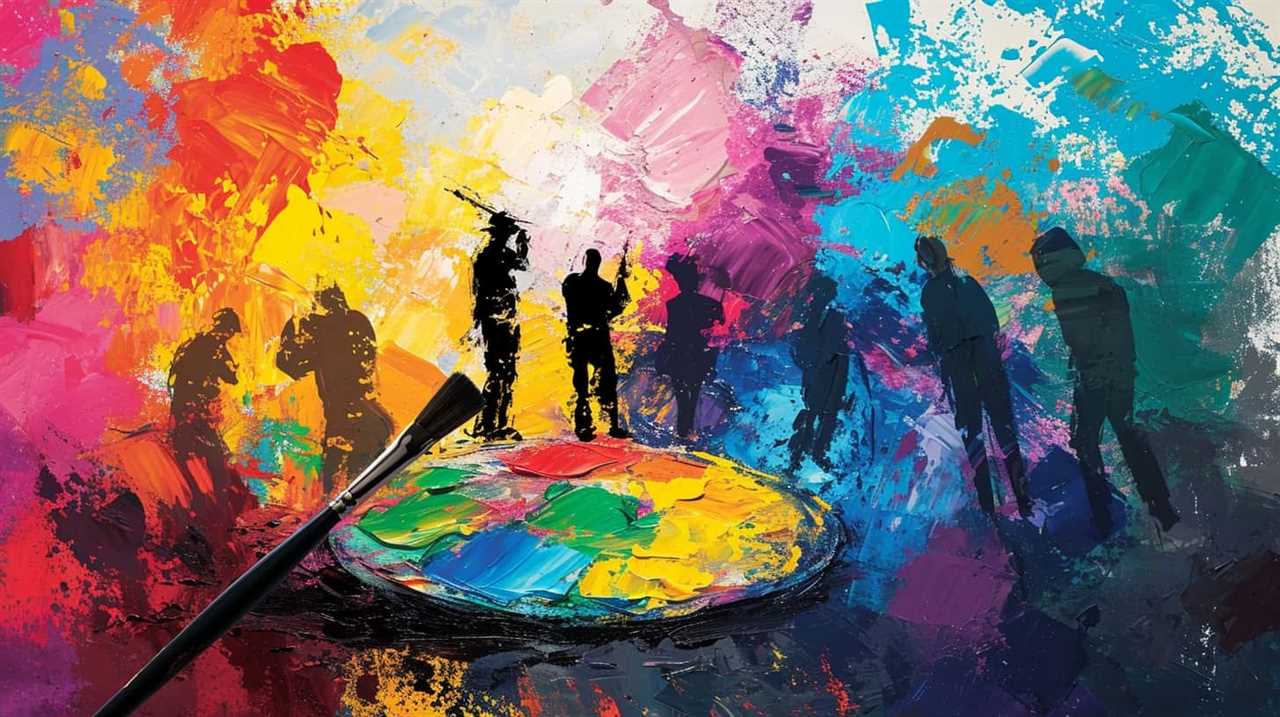
- Emotional Turmoil: Van Gogh’s struggles with mental illness, including episodes of depression and anxiety, deeply influenced his artwork. His emotional turmoil provided the raw material for his intense and passionate paintings.
- Symbolism: Van Gogh’s paintings are filled with symbolic elements that reflect his inner world. Sunflowers, for example, symbolize hope and happiness, while cypress trees represent death and mourning. Through these symbols, Van Gogh expressed his emotions and inner struggles.
- Vivid Colors: Van Gogh’s use of bold and vibrant colors was a deliberate choice to convey his intense emotions. His paintings often feature contrasting colors, creating a sense of energy and movement. The use of color in Van Gogh’s work adds depth and intensity to his artistic expression.
- Expressive Brushstrokes: Van Gogh’s distinctive brushwork contributes to the emotional impact of his paintings. His dynamic and expressive brushstrokes capture the energy and intensity of his subject matter. Through his unique technique, Van Gogh brought his emotions to life on the canvas.
Van Gogh’s intense inspiration, fueled by his mental health struggles and his use of symbolism, color, and brushwork, continues to captivate and inspire artists and art enthusiasts alike. Understanding the depth and complexity of his creative process allows us to appreciate the profound impact he had on the art world.
Monet’s Captivating Color Choices
Monet’s masterful use of color techniques is truly captivating. His deliberate choices in color have a profound impact on the viewer, evoking emotions and setting the mood of his paintings.
It’s fascinating to explore the inspiration behind Monet’s color choices, whether it be the play of light on water or the vibrant hues found in nature.
Monet’s Color Techniques
We were captivated by the color choices of the renowned artist, Monet, and his masterful techniques. Monet’s use of light and shadow in his paintings is a defining characteristic of his impressionist style.

Here are some key aspects of Monet’s color techniques that contribute to the captivating beauty of his work:
- Vibrant Color Palette: Monet had a keen eye for selecting bold and vivid colors, which added depth and energy to his paintings.
- Layering of Brushstrokes: He applied multiple layers of paint, allowing the colors to interact and create a sense of movement and atmosphere.
- Play of Light: Monet carefully observed the changing effects of light and used it to infuse his paintings with a sense of luminosity and life.
- Color Harmony: His ability to harmonize different hues and tones created a visual harmony that was both pleasing and captivating.
Impact of Color Choices
As we delve deeper into Monet’s captivating color choices, an examination of their impact reveals the mastery behind his artistic genius.
Monet’s color choices not only delighted the eye but also had a profound psychological impact on the viewer. His use of vibrant and contrasting hues created a sense of energy and movement, drawing the viewer into his paintings.
The colors he selected had cultural significance as well, reflecting the changing times and societal shifts. For example, his use of vibrant blues and greens in his water lily series represented a desire for tranquility and escape from the industrialization of the modern world.

Monet’s color choices weren’t arbitrary; they were deliberate and purposeful, showcasing his understanding of the psychological and cultural impact of color.
Inspiration Behind Color
Delving into the inspiration behind captivating color choices, our exploration uncovers the creative process that master artists employ to bring their visions to life.
When it comes to Monet’s captivating color choices, two key factors come into play: the psychological impact and the cultural influences.
Monet understood that colors have the power to evoke emotions and create a certain mood within a painting. He carefully selected colors that would elicit specific reactions from the viewer, whether it be a sense of calmness or excitement.
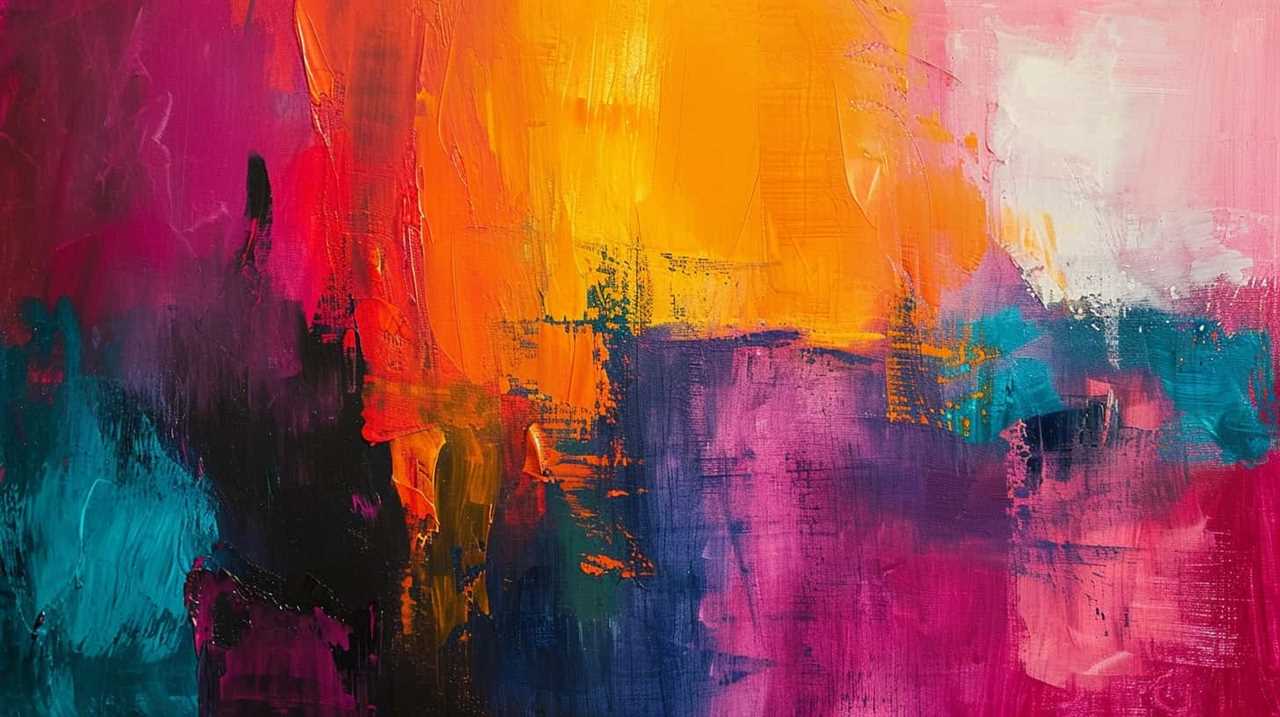
Additionally, Monet was greatly influenced by the cultural trends and artistic movements of his time. He drew inspiration from the Impressionist movement, which emphasized the use of vibrant and unconventional colors to capture the essence of a subject.
Da Vinci’s Meticulous Techniques
Da Vinci’s meticulous techniques showcase the painstaking attention to detail that distinguishes his masterpieces. One of his notable techniques is his masterful use of light and shadow. Through the careful manipulation of light and shade, Da Vinci was able to create depth and dimension in his paintings, giving them a sense of realism that was unprecedented during his time. His understanding of how light interacts with objects allowed him to create lifelike forms and capture the subtlest nuances of light and shadow.
In addition to his use of light and shadow, Da Vinci’s intricate brushwork techniques further contribute to the intricacy and beauty of his works. He employed a variety of brushstrokes, from delicate and precise strokes to bold and expressive ones, to create a range of textures and effects. His brushwork was meticulous and deliberate, allowing him to achieve a level of refinement and detail that few artists have been able to replicate.
Studying Da Vinci’s meticulous techniques can provide valuable insights and inspiration for aspiring artists. His attention to detail, use of light and shadow, and intricate brushwork techniques all contribute to the mastery evident in his works. By understanding and incorporating these techniques into their own practice, artists can strive towards achieving the same level of excellence in their own creations.

Dali’s Surrealistic Vision
We were captivated by Dali’s surrealistic vision, which pushed the boundaries of reality and challenged conventional notions of art. Dali’s surrealist techniques and symbolism in his artwork added layers of complexity and intrigue to his creations.
Here are some key aspects that defined Dali’s surrealist vision:
- Dreamlike Imagery: Dali painted scenes that resembled the subconscious mind, filled with bizarre and fantastical elements. His use of distorted perspectives, melting objects, and unexpected juxtapositions created a sense of unease and fascination.
- Symbolic Meanings: Dali’s artwork was rich in symbolism, with each element carefully chosen to convey deeper meanings. From melting clocks representing the fluidity of time to ants symbolizing decay and death, Dali’s use of symbols added depth and ambiguity to his compositions.
- Psychological Exploration: Dali’s surrealistic vision delved into the depths of the human psyche. His artwork often explored themes of desire, sexuality, and mortality, inviting viewers to confront their own subconscious fears and desires.
- Subversion of Reality: Dali’s surrealistic vision challenged the viewer’s perception of reality. By distorting familiar objects and landscapes, he created a sense of unreality that forced viewers to question their own understanding of the world.
Dali’s surrealistic vision was a testament to his mastery of the art form, allowing viewers to delve into the depths of their own imagination and challenge the boundaries of what art could achieve.
O’Keeffe’s Bold and Organic Forms
O’Keeffe’s unique perspective allows her to capture the essence of organic forms found in nature.
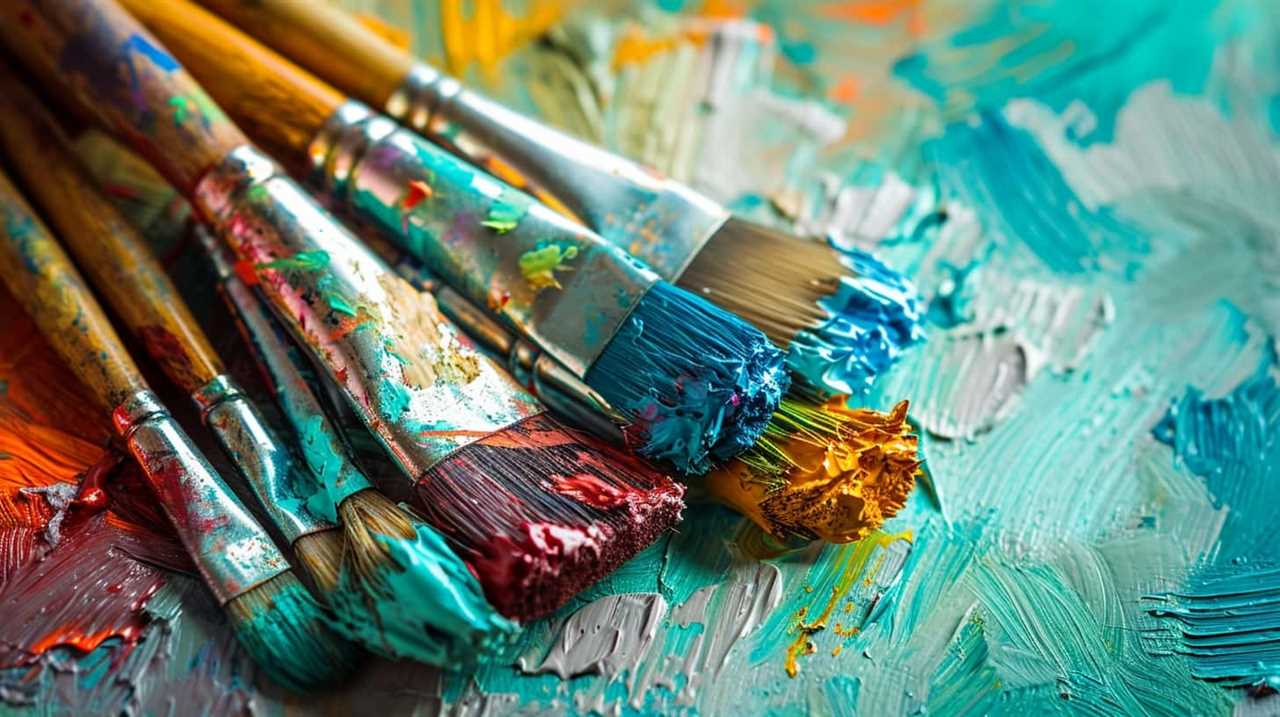
Her bold and daring artistic expression brings these forms to life on canvas, creating a sense of vibrancy and energy.
Through her use of bold colors and strong lines, O’Keeffe’s work evokes a sense of awe and wonder, inviting viewers to see the world through her eyes.
O’keeffe’s Unique Perspective
Throughout our career as artists, we’ve frequently marveled at O’Keeffe’s ability to create bold and organic forms.
O’Keeffe’s use of abstraction allows her to distill the essence of her subjects, stripping away unnecessary details and focusing on the fundamental shapes and lines.
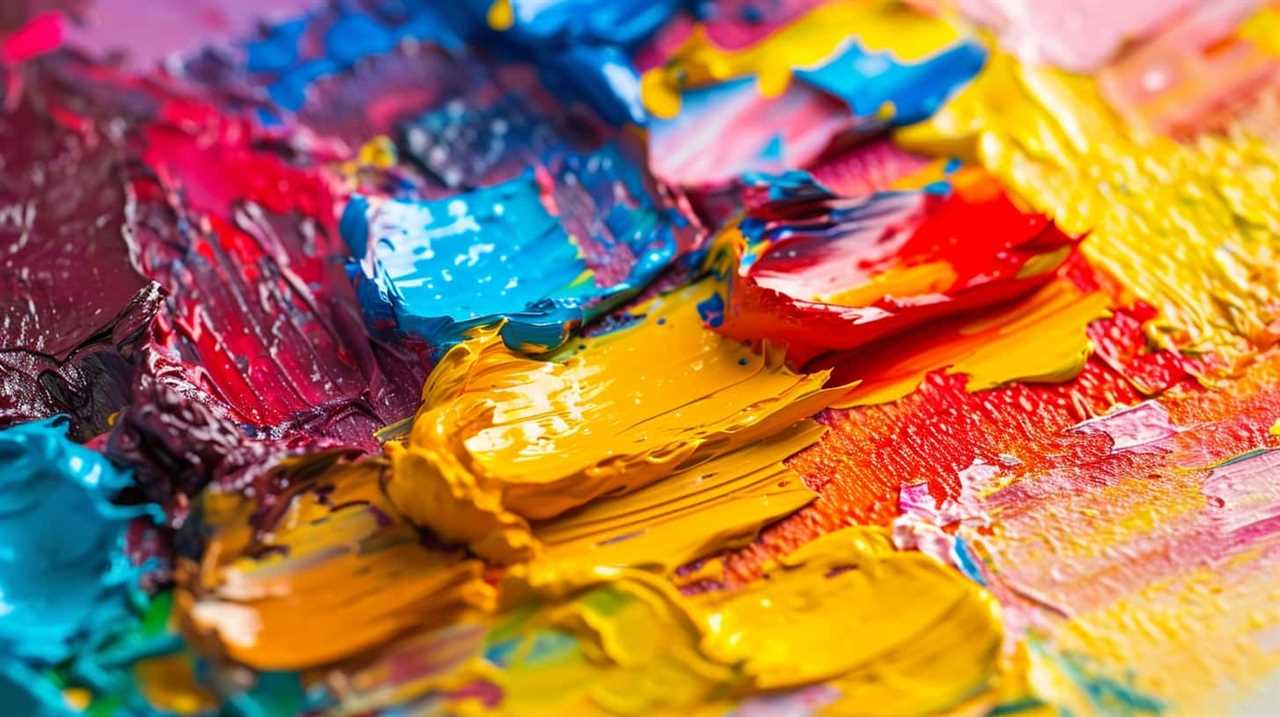
This unique perspective allows her to capture the essence of nature in a way that’s both powerful and mesmerizing.
O’Keeffe’s connection to nature is evident in her artwork, as she often portrays landscapes and flowers with a sense of reverence and awe.
Her ability to translate her emotional and spiritual connection to the natural world onto canvas is truly remarkable.
O’Keeffe’s bold and organic forms invite us to see the world through her eyes and experience the beauty and wonder that she finds in every corner of nature.
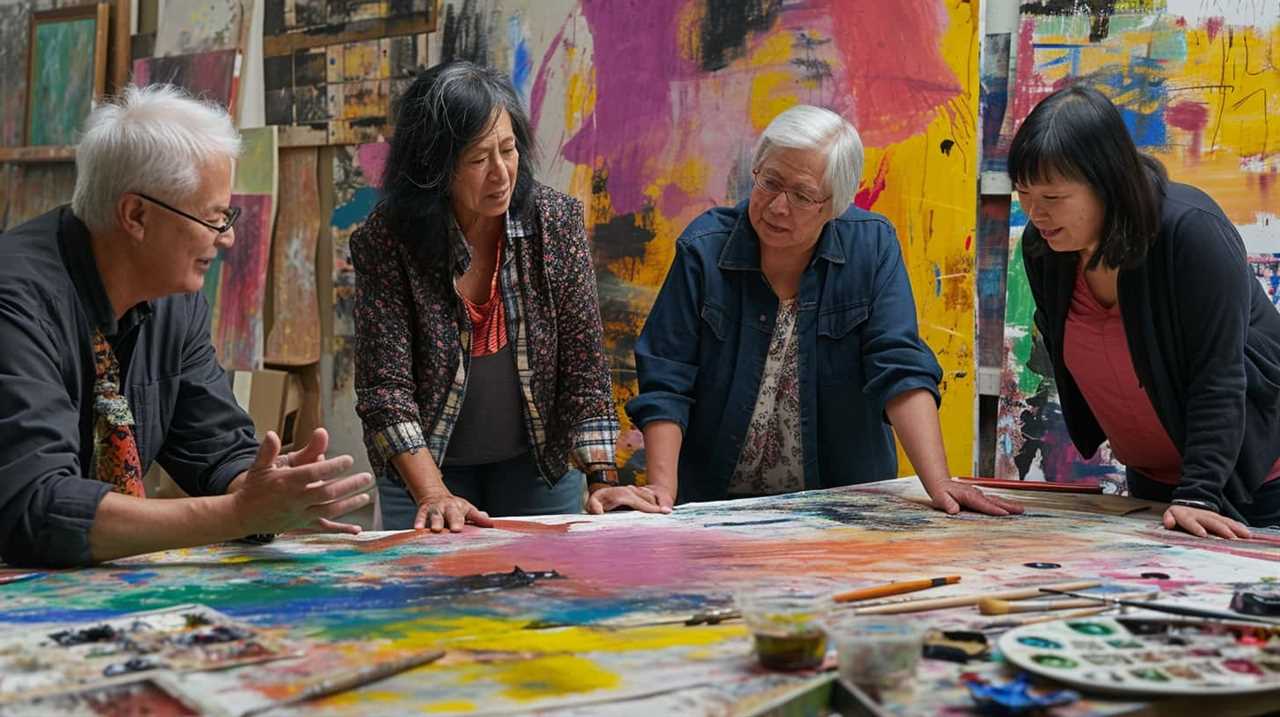
Organic Forms in Nature
The exploration of organic forms in nature reveals the power and beauty of abstraction in our creative process. Symbolism in abstract art allows us to tap into the deeper meaning and emotions that can be conveyed through these natural elements.
Artists like Georgia O’Keeffe were deeply influenced by the shapes, colors, and textures found in nature, and used them as a source of inspiration for their work. O’Keeffe’s bold and organic forms, such as her famous flower paintings, capture the essence of these natural elements and transform them into powerful artistic expressions.
The influence of natural elements on artistic expression is evident in the way O’Keeffe skillfully merges the delicate petals and vibrant colors of flowers, creating a sense of both beauty and strength. This exploration of organic forms in nature not only allows artists to connect with the world around them, but also provides a rich source of inspiration for bold and expressive artistic expression.
As we’ll explore in the next section, this connection with nature can lead to the creation of stunning and thought-provoking artworks that resonate with viewers on a visceral level.
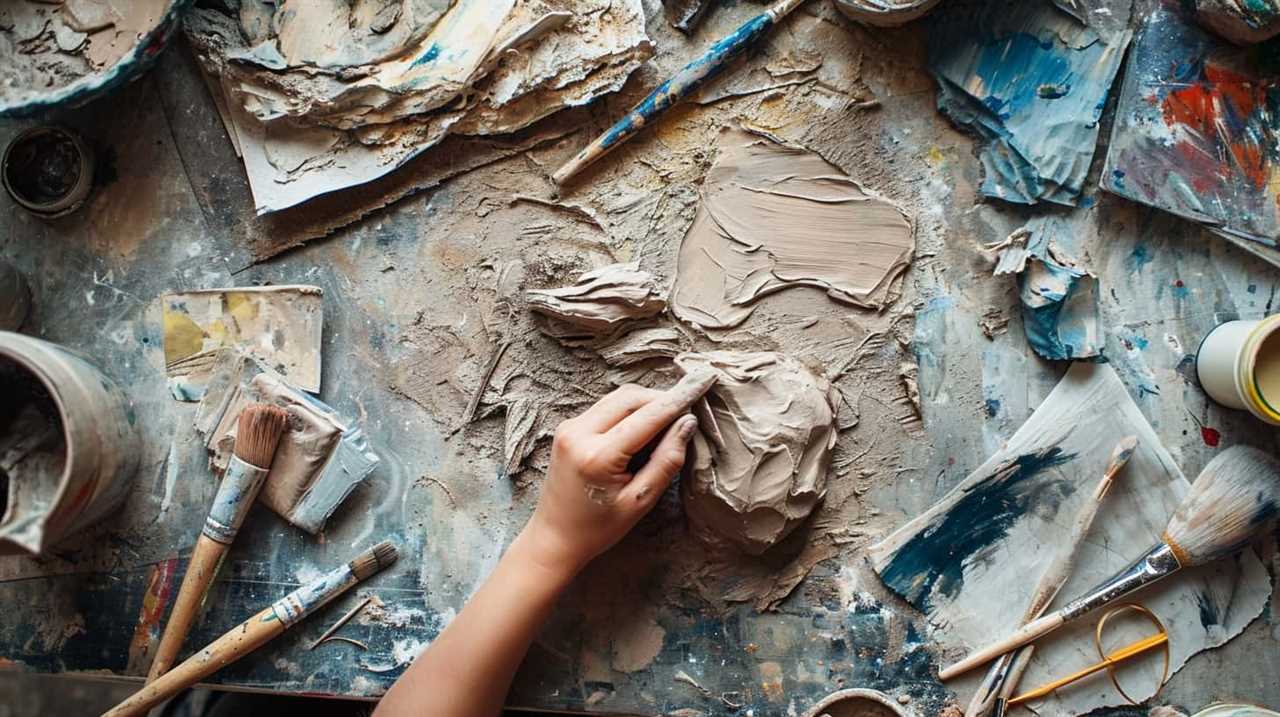
Boldness of Artistic Expression
As we delve into the boldness of artistic expression, one can’t overlook the impact of O’Keeffe’s bold and organic forms.
O’Keeffe, a prominent American artist, was known for her ability to capture the essence of her subjects in a bold and expressive manner. Her use of vibrant colors, exaggerated proportions, and dynamic compositions allowed her to create artworks that evoked a sense of energy and emotion.
O’Keeffe’s boldness in her artistic expression is evident in her paintings of flowers, landscapes, and even skyscrapers. Her unique style challenged the traditional norms of art, pushing the boundaries and paving the way for future generations of artists to explore their own boldness in artistic expression.
Warhol’s Pop Art Revolution
We frequently find ourselves drawn to Warhol’s Pop Art Revolution, as it allows us to explore the transformative power of popular culture through vibrant colors and bold imagery. Warhol’s contribution to the pop art movement can’t be overstated. His unique approach to art challenged traditional notions of beauty and elevated everyday objects and images to the realm of fine art. Warhol’s use of repetition and mass production techniques, such as screen printing, revolutionized the art world and had a profound influence on contemporary art.
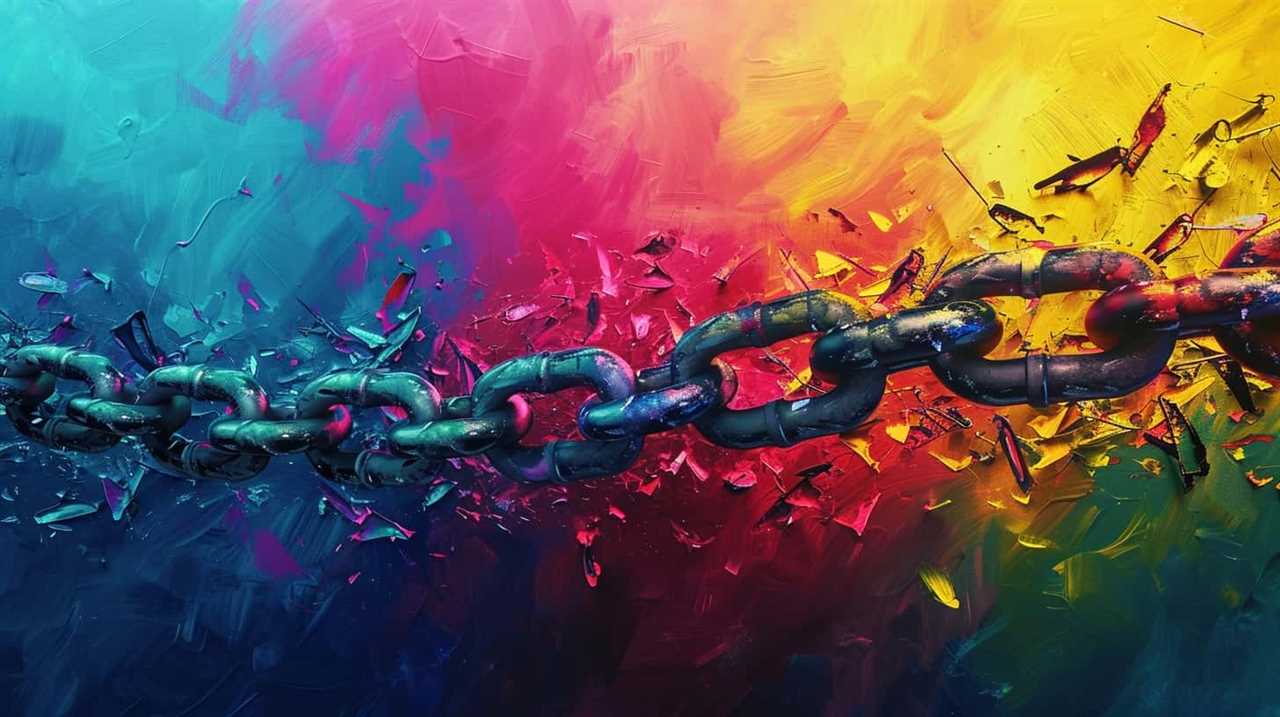
Warhol’s Pop Art Revolution emerged in the 1960s as a response to the consumer-driven society of post-war America. By appropriating images from mass media, such as advertisements, comic books, and celebrity portraits, Warhol brought the mundane into the realm of high art. His bold, graphic style and use of vibrant, eye-catching colors captivated viewers and challenged the notion of what art could be.
Warhol’s influence on contemporary art is undeniable. His groundbreaking approach to art-making paved the way for future generations of artists to explore themes of consumerism, celebrity culture, and the impact of mass media. His iconic works, such as the Campbell’s Soup Cans and Marilyn Monroe portraits, continue to be celebrated and referenced in the art world today.
Warhol’s Pop Art Revolution not only transformed the art world, but it also challenged societal norms and values. By elevating popular culture to the realm of fine art, Warhol forced viewers to reconsider their preconceived notions of what’s worthy of artistic representation. His bold and provocative works continue to inspire and challenge artists to this day, making Warhol a true master of his craft.
Kahlo’s Intimate Self-Portraits
Kahlo’s intimate self-portraits are rich with symbolism, providing viewers with a glimpse into her inner world. Through the use of vivid imagery and carefully chosen objects, Kahlo conveys her emotional depth and invites us to explore the complexities of her experiences.
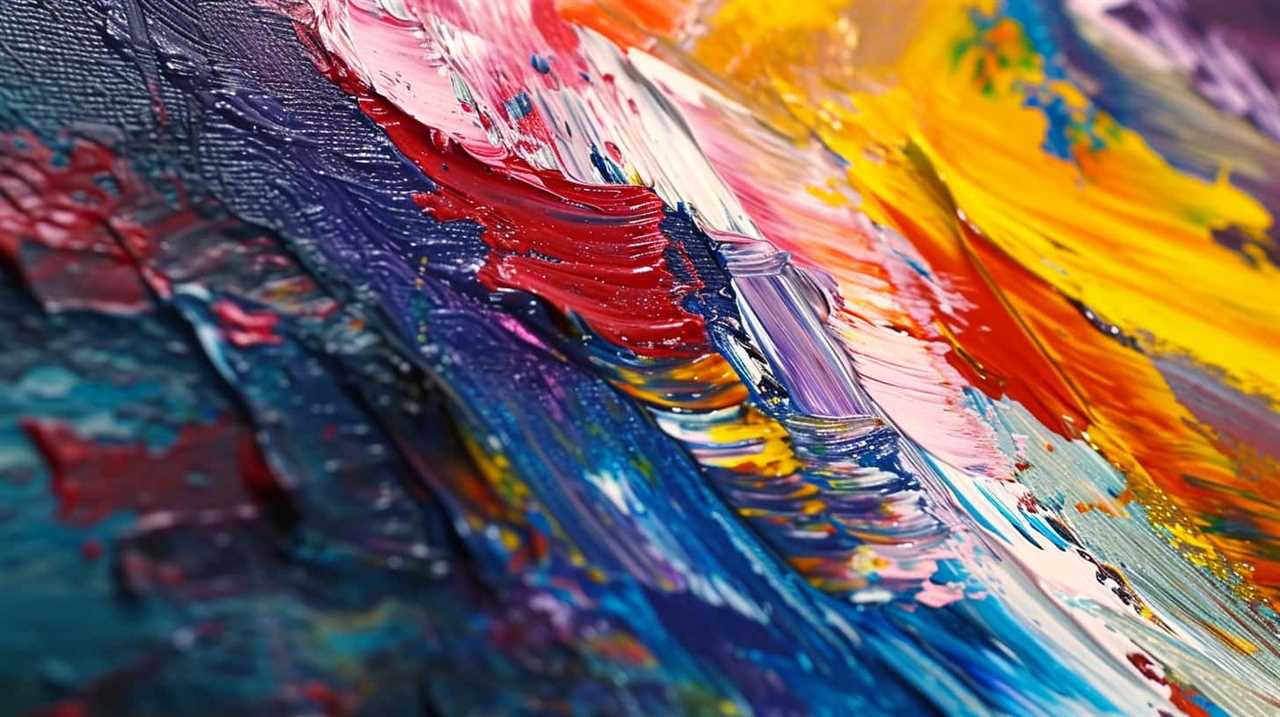
These portraits are deeply personal, influenced by Kahlo’s own struggles, pain, and triumphs, allowing us to connect with her on a profound level.
Symbolism in Kahlo’s Portraits
In our examination of the symbolism present in Kahlo’s intimate self-portraits, we uncover the profound depth of meaning embedded within each brushstroke. Kahlo’s use of symbolism allows her to express her innermost thoughts, emotions, and struggles in a visually captivating manner. Her self-portraits serve as windows into her soul, revealing the complexity of her experiences and the raw intensity of her emotions.
Through the use of vibrant colors, Kahlo captures the spectrum of human emotions, from joy and passion to pain and despair.
The presence of animals and nature in her portraits symbolize her connection to the natural world and her desire for freedom and liberation.
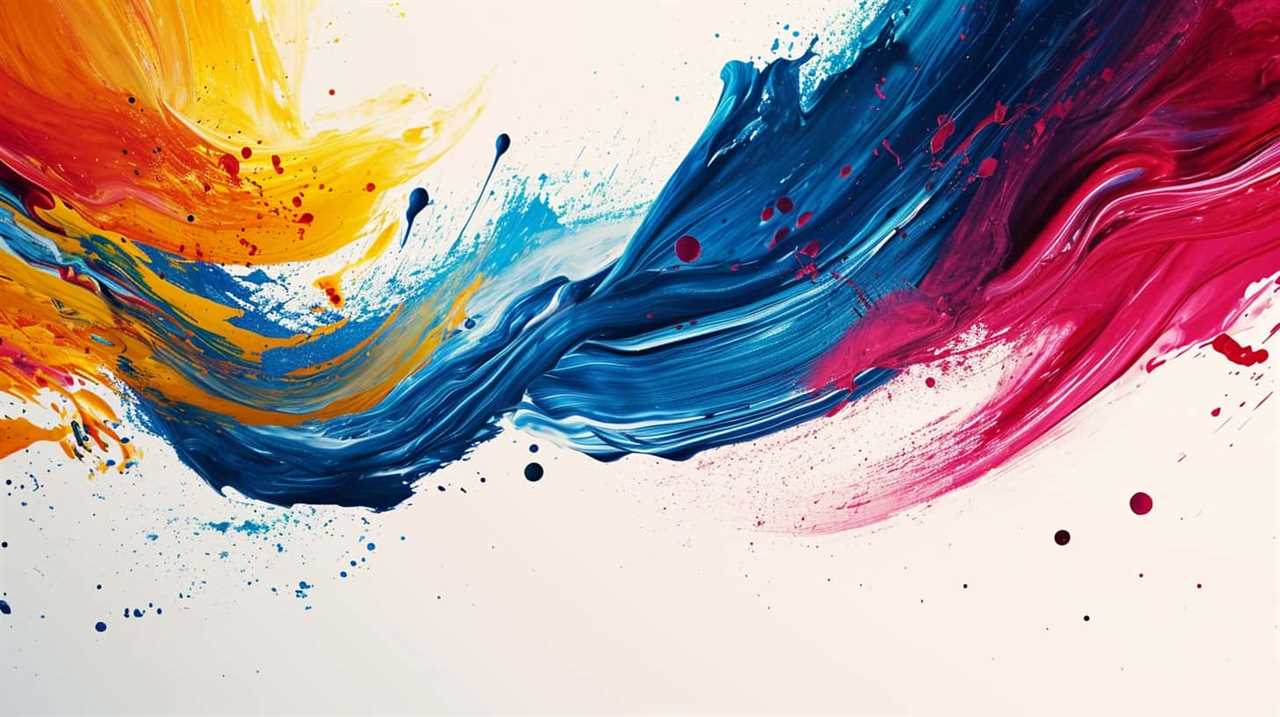
The depiction of physical pain and bodily transformation reflects Kahlo’s constant battle with physical ailments and her quest for self-acceptance.
The use of cultural symbols and religious imagery highlights Kahlo’s Mexican heritage and her exploration of spirituality and identity.
Emotional Depth Portrayed
The emotional depth portrayed in Kahlo’s intimate self-portraits captivates viewers with its raw intensity and profound meaning. Through her brushstrokes and artistic interpretation, Kahlo creates a visual language that speaks directly to the viewer’s emotions.
Each stroke of paint reveals a glimpse into the artist’s inner world, filled with pain, longing, and resilience. Kahlo’s self-portraits serve as a mirror, reflecting not only her physical appearance but also her emotional state. Her ability to convey such depth and complexity in her work is a testament to her mastery as an artist.

The intensity of her gaze, the vivid colors, and the meticulous attention to detail all contribute to the overwhelming emotional impact of her self-portraits. Kahlo’s work invites viewers to explore their own emotions and confront the universal human experience of pain and vulnerability.
Influence of Personal Experiences
Our exploration of the influence of personal experiences on intimate self-portraits wouldn’t be complete without acknowledging the profound impact that Kahlo’s own life had on her artistic expression.
Frida Kahlo, a renowned Mexican artist, is known for her raw and deeply personal self-portraits. Her paintings serve as a visual diary, revealing the struggles and triumphs of her life.
The influence of personal experiences on Kahlo’s work is evident in her choice of subject matter and her use of color. The psychological impact of her color choices is particularly striking, as she often used vibrant hues to convey her emotions and inner turmoil.

Through her art, Kahlo invites us into her world, allowing us to witness the power of personal experiences and the transformative nature of self-expression.
Pollock’s Action Painting Method
During our exploration of master artists’ secrets of the creative process, we delve into Pollock’s groundbreaking use of the action painting method. Pollock’s approach to painting was a departure from traditional techniques, much like Picasso’s cubist style and Van Gogh’s brushstroke techniques. Instead of using brushes, Pollock employed unconventional tools like sticks, knives, and even his own hands to apply paint onto the canvas.
The action painting method involved Pollock physically engaging with the canvas, moving around it, and dripping or pouring paint onto it in a spontaneous and energetic manner. This process allowed Pollock to create expressive and dynamic compositions that captured a sense of movement and emotion. By embracing chance and embracing the physicality of the act of painting, Pollock’s work became a powerful representation of his inner thoughts and emotions.
Pollock’s action painting method not only revolutionized the art world but also challenged the notion of what it meant to create art. It pushed the boundaries of traditional techniques and opened up new possibilities for artistic expression. The bold and energetic nature of Pollock’s work continues to inspire and influence artists today.
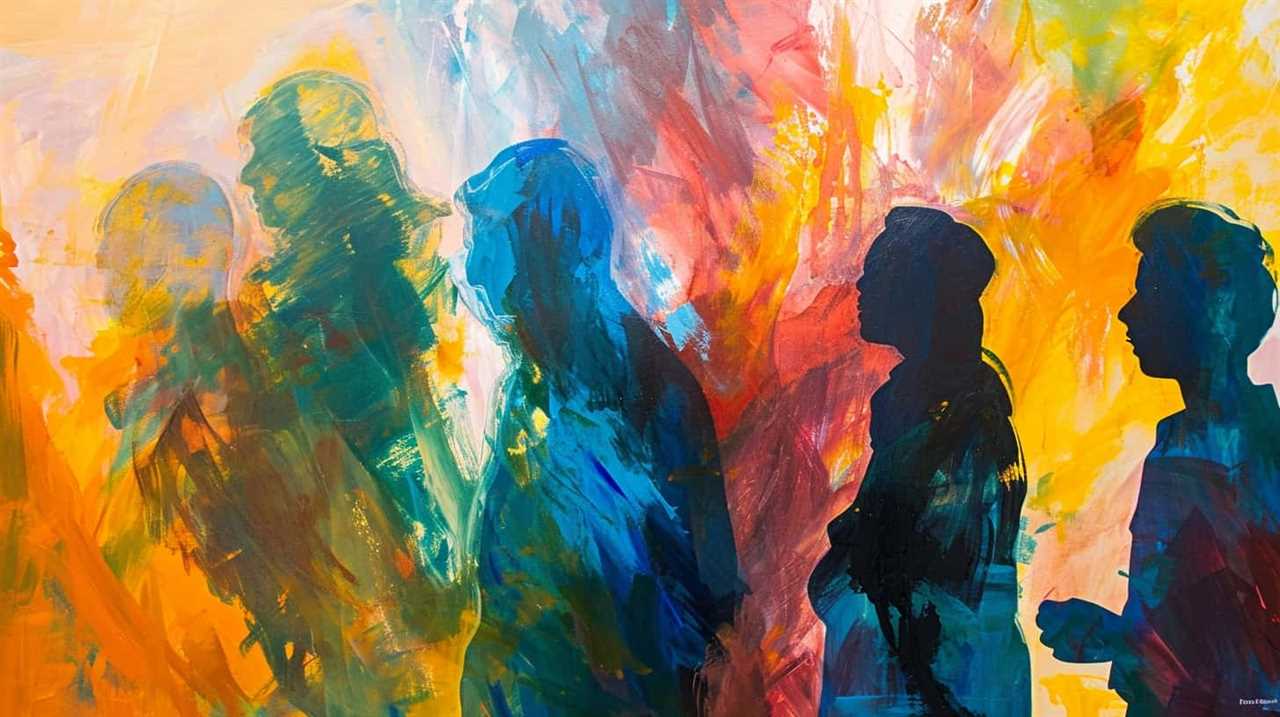
Transitioning into the subsequent section about Michelangelo’s sculpting mastery, we can see parallels between Pollock’s innovative approach to painting and Michelangelo’s groundbreaking techniques in sculpture.
Michelangelo’s Sculpting Mastery
Transitioning from Pollock’s action painting method, we now delve into Michelangelo’s sculpting mastery. As we explore the techniques employed by this renowned artist, it becomes evident that his sculpting prowess was unparalleled. By studying the influence of classical art on Michelangelo’s work, we can gain a deeper understanding of his creative process and the secrets behind his masterpieces.
- Marble Carving: Michelangelo’s preferred medium was marble, and his ability to transform a solid block into lifelike figures was awe-inspiring. His meticulous approach involved carefully studying the stone’s natural qualities to reveal the hidden beauty within.
- Anatomical Accuracy: One of Michelangelo’s greatest strengths was his exceptional understanding of human anatomy. He’d spend countless hours dissecting cadavers to gain an intimate knowledge of the human form, allowing him to create sculptures that exuded realism and vitality.
- Dynamic Poses: Michelangelo’s sculptures were known for their dynamic and fluid poses. Instead of static and rigid compositions, he infused his works with a sense of movement and energy, captivating viewers and bringing his creations to life.
- Emotional Expression: Another hallmark of Michelangelo’s sculpting technique was his ability to convey intense emotions through his works. From the anguish in the face of his Pieta to the determination of his David, each sculpture was imbued with a profound sense of emotion that resonated with audiences.
Michelangelo’s sculpting techniques and the influence of classical art on his work continue to inspire and captivate artists and art enthusiasts to this day. His mastery of the craft serves as a testament to the power of dedication, skill, and a deep understanding of the human form.
Hockney’s Experimentation With Perspective
We will now delve into Hockney’s exploration of perspective, shedding light on his innovative techniques and unique approach to capturing the world around him. Hockney, a master of his craft, not only pushed the boundaries of traditional perspective but also embraced technology to enhance his artistic vision.
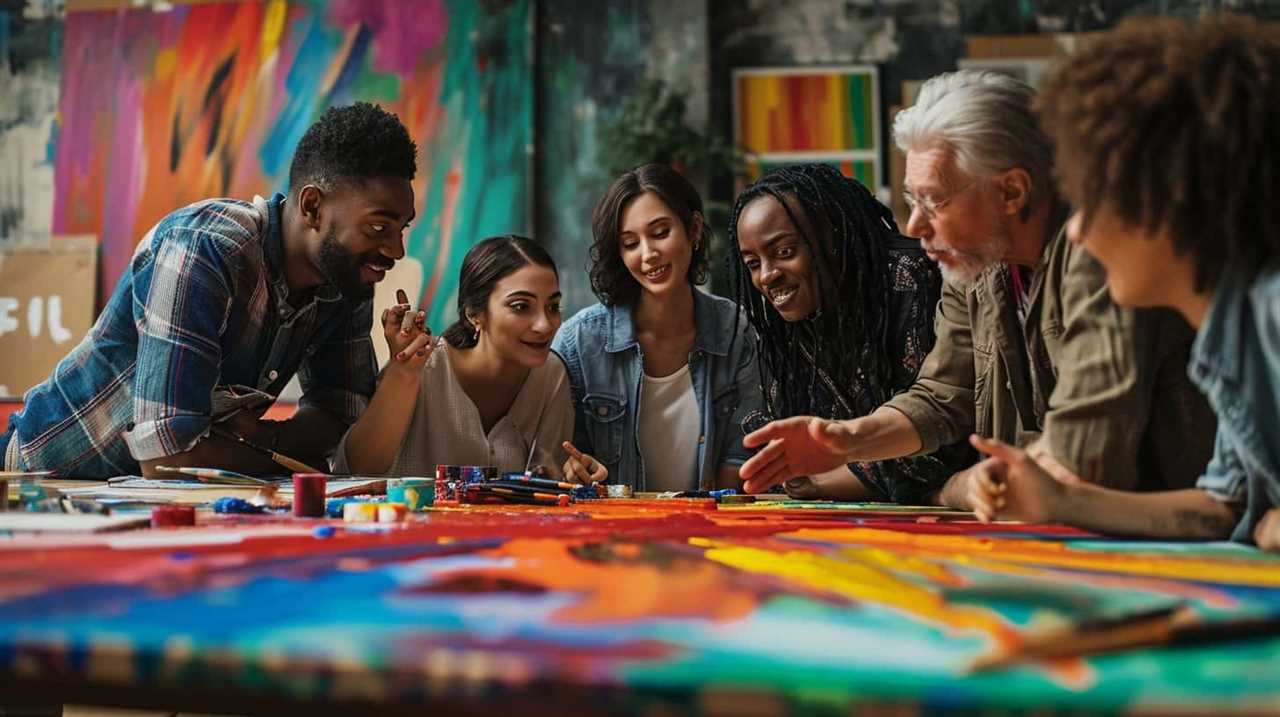
One notable aspect of Hockney’s use of technology was his experimentation with the camera lucida. This device allowed him to trace images directly onto his canvas, creating a precise representation of the scene in front of him. By utilizing this tool, Hockney was able to capture intricate details with remarkable accuracy.
Another fascinating aspect of Hockney’s exploration of perspective was his keen observation of light. He understood that light plays a pivotal role in shaping our perception of depth and space. To capture this phenomenon, Hockney experimented with various techniques, such as manipulating shadows and highlights, to create a sense of depth and dimension in his paintings.
To illustrate the significance of Hockney’s experimentation with perspective, let us consider the following table:
| Traditional Perspective | Hockney’s Innovation |
|---|---|
| One-point perspective | Multiple viewpoints |
| Fixed vantage point | Dynamic compositions |
| Linear depth | Layered perspectives |
Through his use of technology and exploration of light, Hockney revolutionized the way we perceive and capture the world. His innovative techniques continue to inspire and challenge artists today, reminding us of the endless possibilities that await those who dare to venture beyond the confines of tradition.

Frequently Asked Questions
How Did Picasso’s Unique Approach Influence Other Artists?
Picasso’s unique approach revolutionized the art world, inspiring contemporary artists with his bold experimentation and unconventional techniques. His influence can be seen in the way artists now push boundaries, challenge norms, and constantly innovate in their artistic endeavors.
What Were Van Gogh’s Sources of Intense Inspiration?
Van Gogh’s sources of intense inspiration were rooted in his emotional turmoil. His use of vibrant colors was a reflection of his inner struggles, as he sought to convey his emotions through his art.
How Did Monet Choose His Captivating Color Combinations?
Monet’s color choices were guided by his artistic process. By carefully observing nature and experimenting with different combinations, he created captivating palettes that captured the essence of light and atmosphere.
What Specific Techniques Did Da Vinci Use to Achieve His Meticulous Artworks?
Da Vinci’s artistic technique was characterized by his meticulous attention to detail and his masterful use of light and shadow. These elements brought depth and realism to his artworks, showcasing his unrivaled skill as a painter.
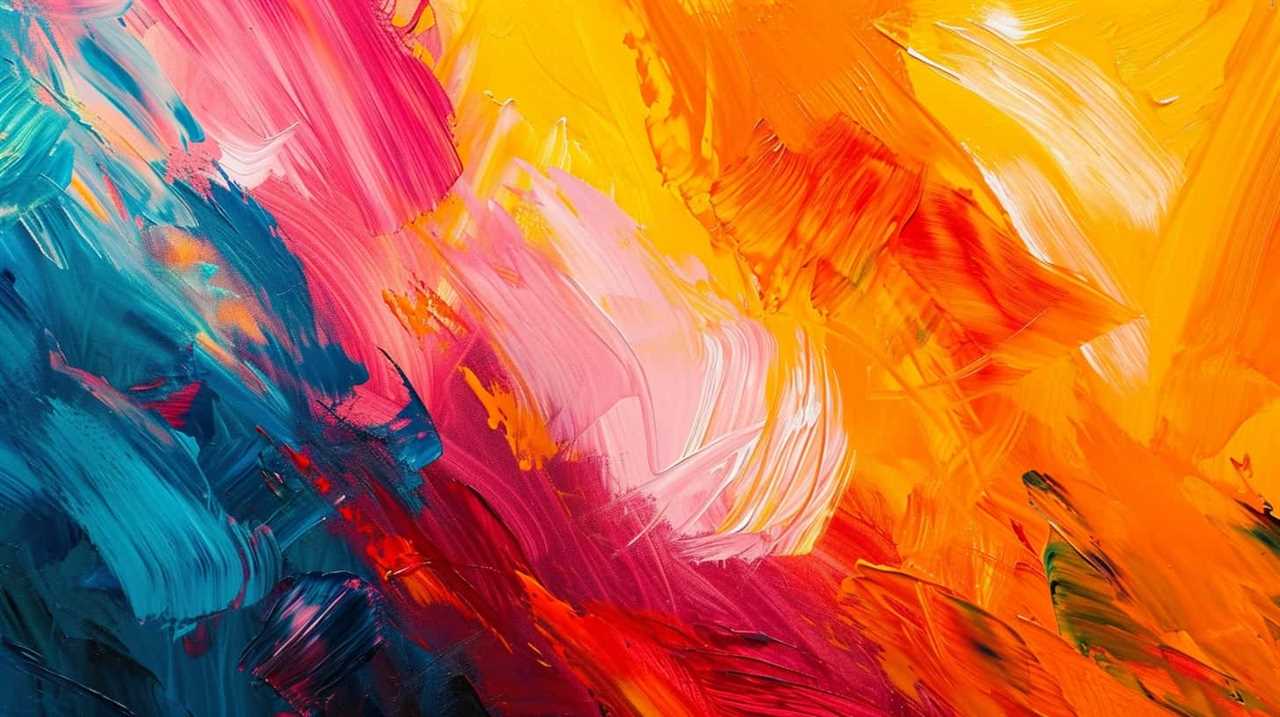
How Did Dali’s Surrealistic Vision Impact the Art World at the Time?
Dali’s influence was profound, reshaping the art world with his surrealistic vision. Surrealism’s impact extended beyond aesthetics, challenging conventional norms and inviting artists to explore the subconscious. Dali’s work continues to inspire and provoke thought today.
How Do Master Artists Incorporate Diversity into Their Creative Process?
Master artists incorporate art diversity in today’s world by drawing inspiration from different cultures, traditions, and perspectives. They integrate elements of diversity into their creative process, allowing them to produce unique and inclusive artworks that reflect the multicultural society we live in.
Conclusion
Despite the mystique surrounding master artists and their creative process, the secrets revealed in this article shed light on their unique approaches.
From Picasso’s unconventional methods to Van Gogh’s intense inspiration, each artist brings their own perspective to the canvas. While their techniques may seem meticulous or surrealistic, they all share a common goal: to captivate and inspire viewers.
Through their experimentation and mastery, these artists have left a lasting impact on the art world, reminding us of the power of creativity.
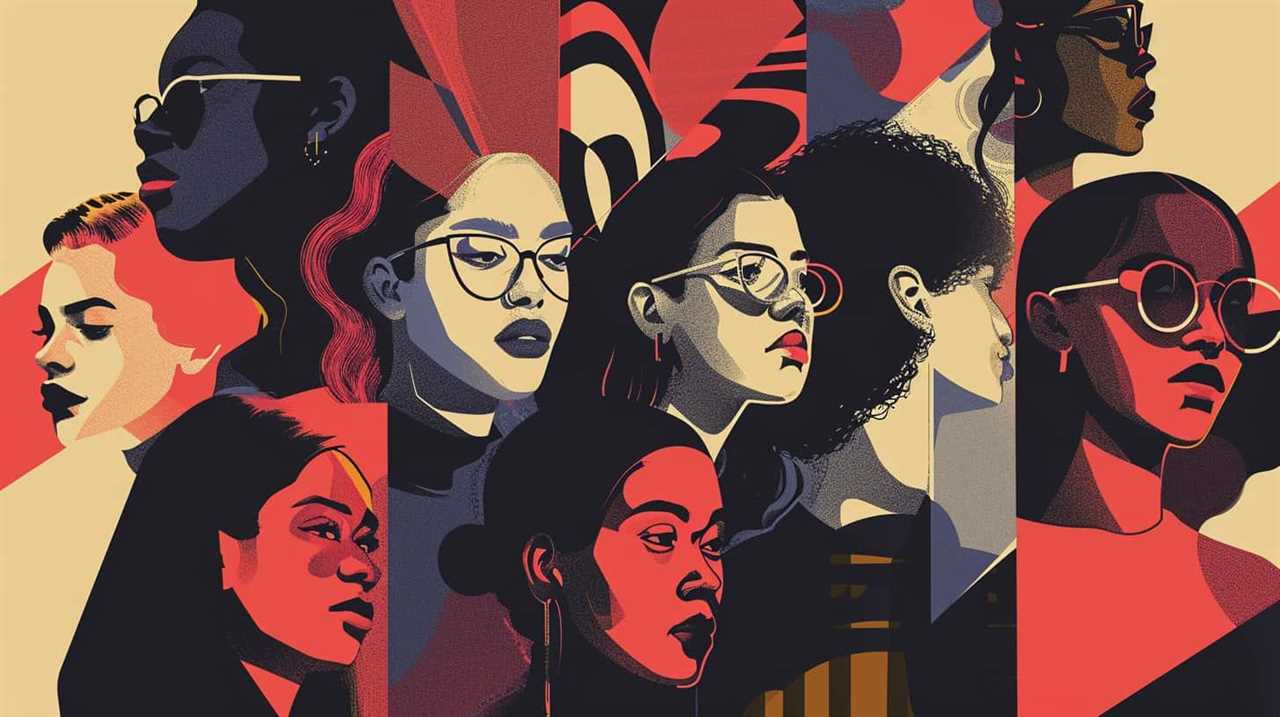
Lauren’s talent in writing is matched by her passion for storytelling. Her love for books and deep understanding of culture and entertainment add a distinct flavor to her work. As our media and press contact, Lauren skillfully bridges the gap between afterQuotes and the broader media landscape, bringing our message to a wider audience.
